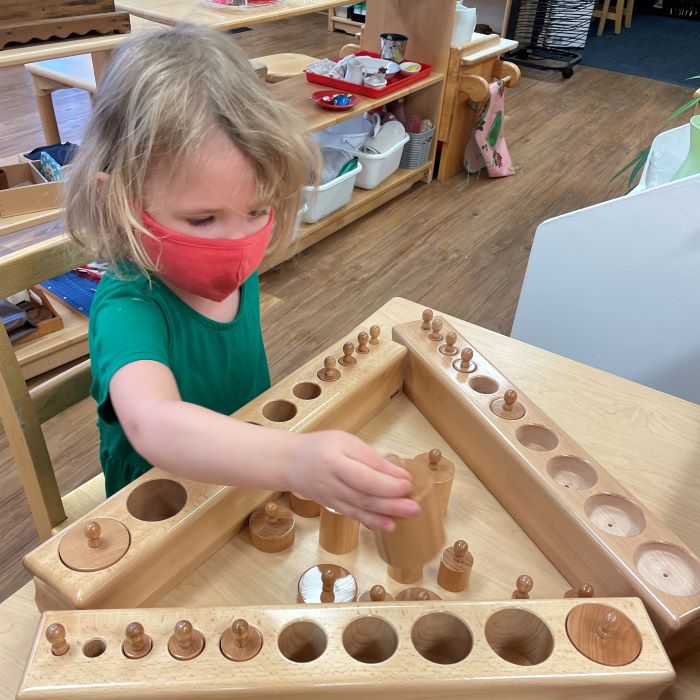The Teacher as an Observer
By Kim Yul

Unlike regular teachers, Montessori teachers play two different roles in the Montessori classroom: one role as teacher and the other as observer. It takes a lot of effort to perform these two roles at the same time. Furthermore, because the teacher shares the same environment with their students, they must pay a lot of attention to their environment. Thus, Montessori teachers are always very busy in their classrooms.
There are lots of things to observe in the Montessori classroom. We should observe the behavior and learning status of the children and how the prepared environment of the classroom engages the student, and we even need to observe ourselves. Why should teachers observe themselves? In my opinion, I think that the teacher themself is included in the prepared environment of the Montessori classroom. The teacher must constantly ask themself how their behavior is affecting the children, how well they are performing as an observer, how well are they respecting the children, and are they giving proper assistance to the children.
In particular, when performing the role of observer in the classroom, the teacher should be careful not to disturb the children. As Maria Montessori (1968) said, “The teacher moves about slowly and silently. She goes up to the one who has called her. Her supervision is such that anyone who needs her is immediately aware of her presence, whereas those who do not are completely oblivious to her” (p. 302). In addition, it is necessary to identify one’s tendencies to find a suitable observation method. Do you need to see all of the information on one page? What is your writing style? Do you need to take a picture and put it in your notes? These questions are important for the teacher to ask themself so that the information they collect is not lost. It is important to use the information collected through the observation, and the teacher needs to know how to best do that. “The teacher must understand and feel her position of observer; the activity must lie in the phenomenon” (Montessori, 2008, Ch. 5).
The teacher also tries to not make judgments or evaluations. They are just noticing the information. Rather than thinking something like “Jojo doesn’t like to use his pencil,” a true observation might be more like “It looks like Jojo prefers to use a crayon to draw. He sometimes looks sad because he often breaks his pencil.” Observation needs to be scientific, precise, accurate, and in open-judgment format. This is very difficult to do, but quick judgments bring lots of errors to the observation. Close attention needs to be paid to get accurate information.
Reference
Montessori, M. (1986). The discovery of the child. Ballantine Books.
Montessori, M. (2008). The Montessori method. Wilder.
The Author
Kim Yul is originally from Gwangju and has taught in Cincinnati, Ohio, for many years. He is a Montessori elementary school teacher who believes education can change the world.






